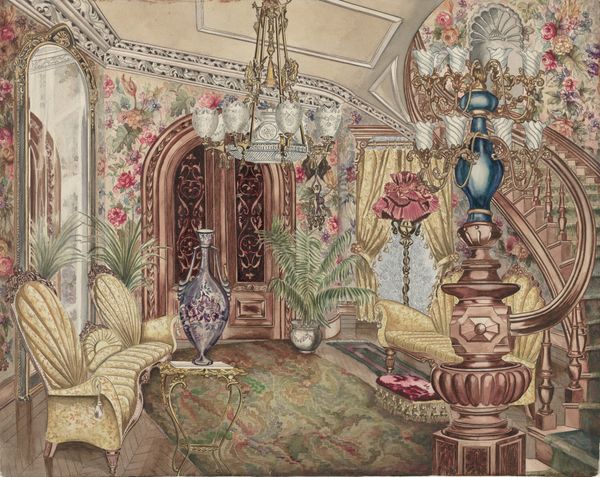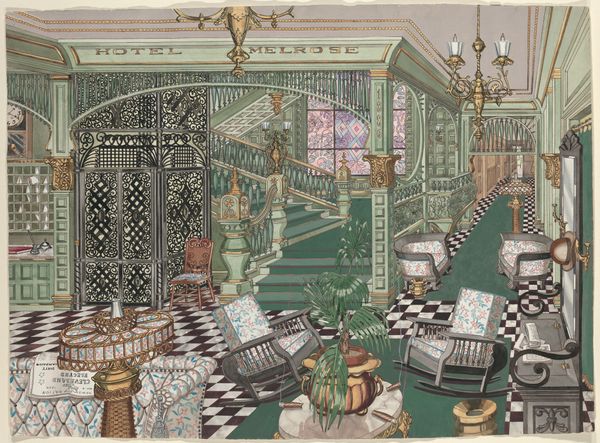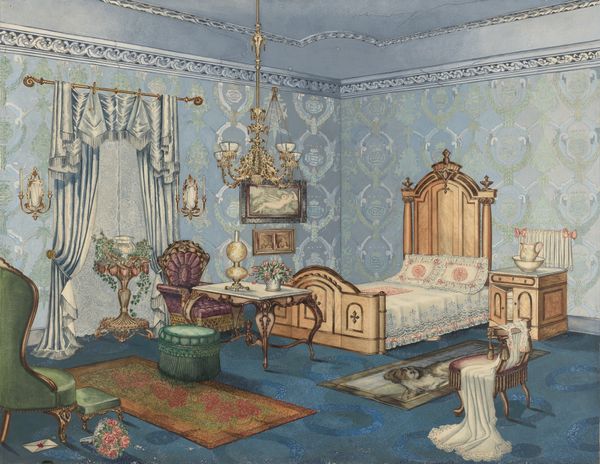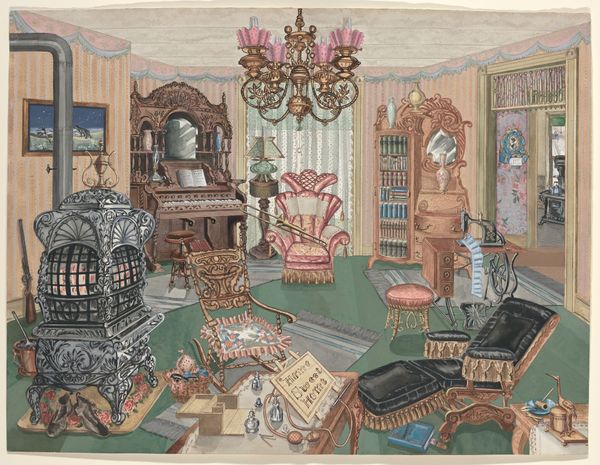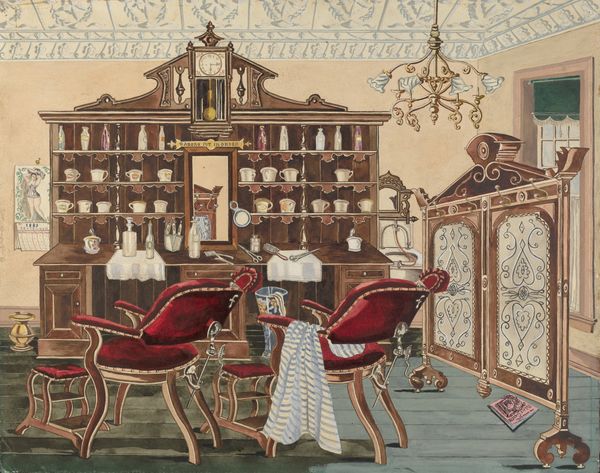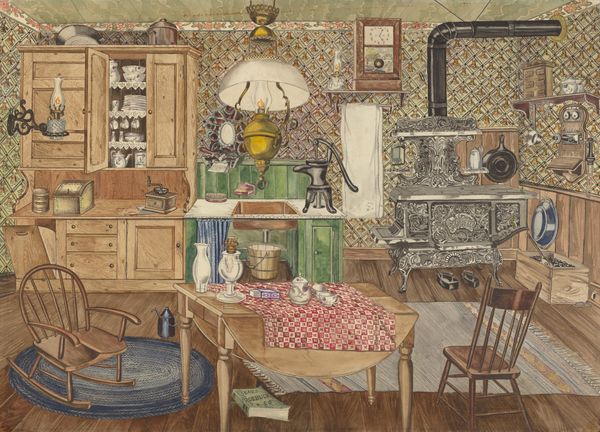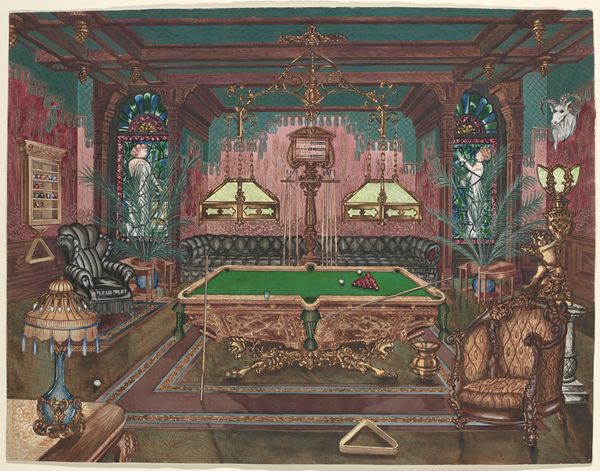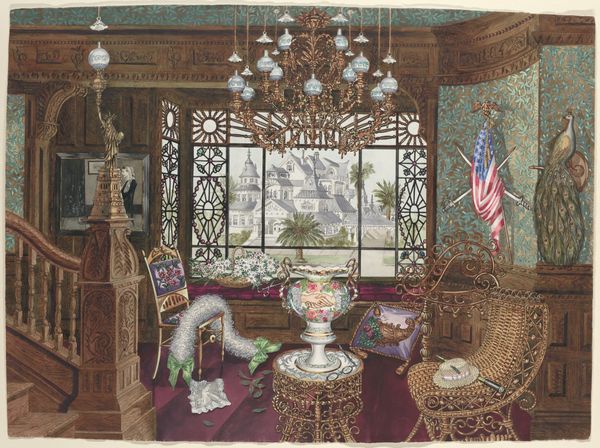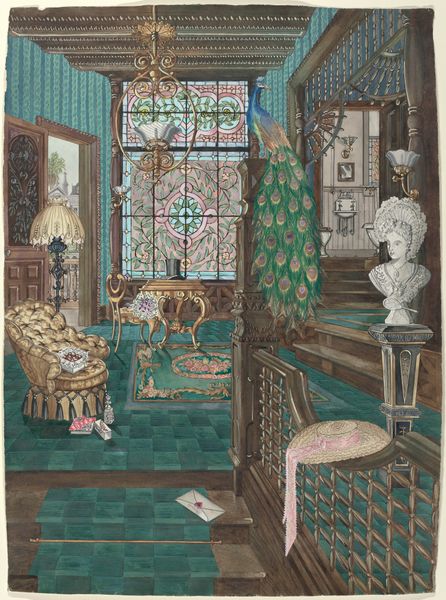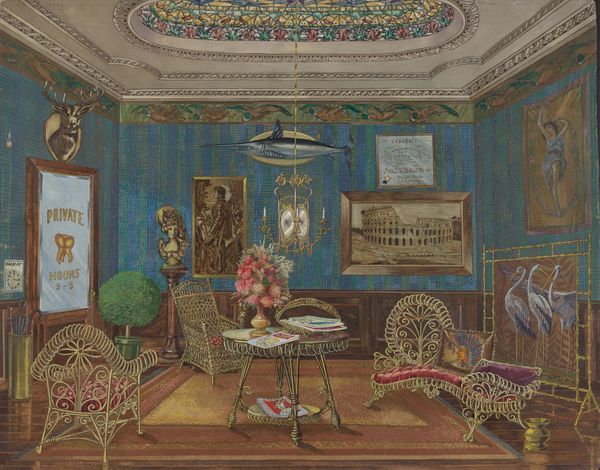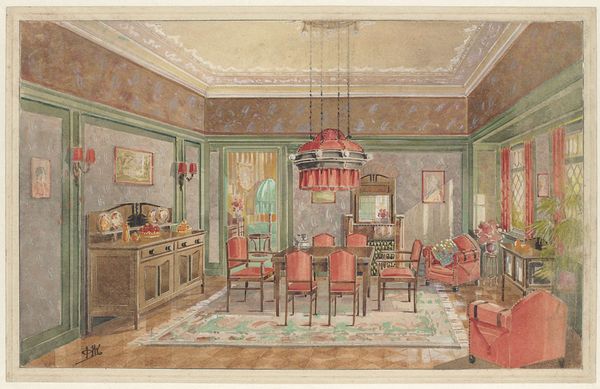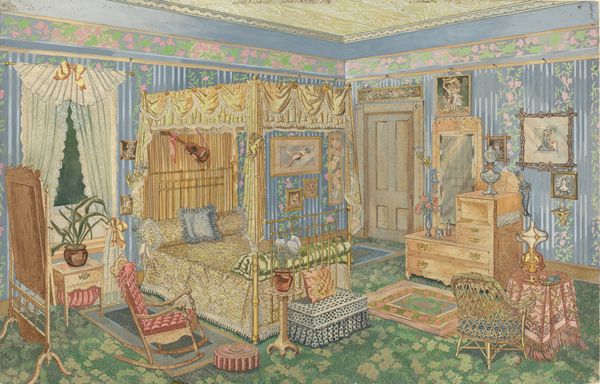
Dimensions: overall: 47.3 x 58.5 cm (18 5/8 x 23 1/16 in.)
Copyright: National Gallery of Art: CC0 1.0
Editor: This is Perkins Harnly's "Dining Room," a watercolor and drawing piece created sometime between 1935 and 1942. I'm immediately struck by how meticulously detailed it is. It almost feels like a stage set. What do you make of it? Curator: What I see is a careful recording of material culture and perhaps, aspiration. Harnly wasn't just depicting a dining room; he was capturing a particular level of consumption. Consider the wallpaper – likely mass-produced but attempting an air of handcrafted elegance. How do the depicted objects speak to you in terms of class and labour? Editor: Well, all the furniture and decorations suggest a level of affluence, I think. The labor involved in creating and maintaining a space like this is definitely present, but also sort of invisible. Is that what you mean? Curator: Exactly. Look closely at the technique: the tight, almost obsessive rendering of surfaces. Is this the work of someone deeply embedded within this class, or observing it from the outside? The artist’s labor is evident but what perspective do you see conveyed by his approach to materials, objects, and space? Editor: I hadn't considered it as a perspective, more of a neutral observation. It feels almost like an advertisement, portraying a sort of domestic ideal. But that idealized life relies on the unseen labor of others. Curator: Precisely. The medium itself - watercolor - historically associated with both amateur leisure and preparatory sketches, is now used to render an entire environment. Where does this push the boundaries of art, craft, and social documentation? Editor: I see what you mean. Looking at the work in that light, I’m less focused on its representational accuracy and more on what it’s saying about the values and realities of that time. Thanks for making me rethink the context of this work! Curator: Absolutely, viewing art from the perspective of materials and social context allows for a more enriching understanding of the time it reflects. I appreciate your open consideration!
Comments
No comments
Be the first to comment and join the conversation on the ultimate creative platform.
